The Highly Anticipated PK
Who is more energy-efficient and environmentally friendly, Li Xiang’s Ideal ONE or Audi Q7 PHEV? This is the biggest suspense in the current automotive industry.
The CEO’s War of Words
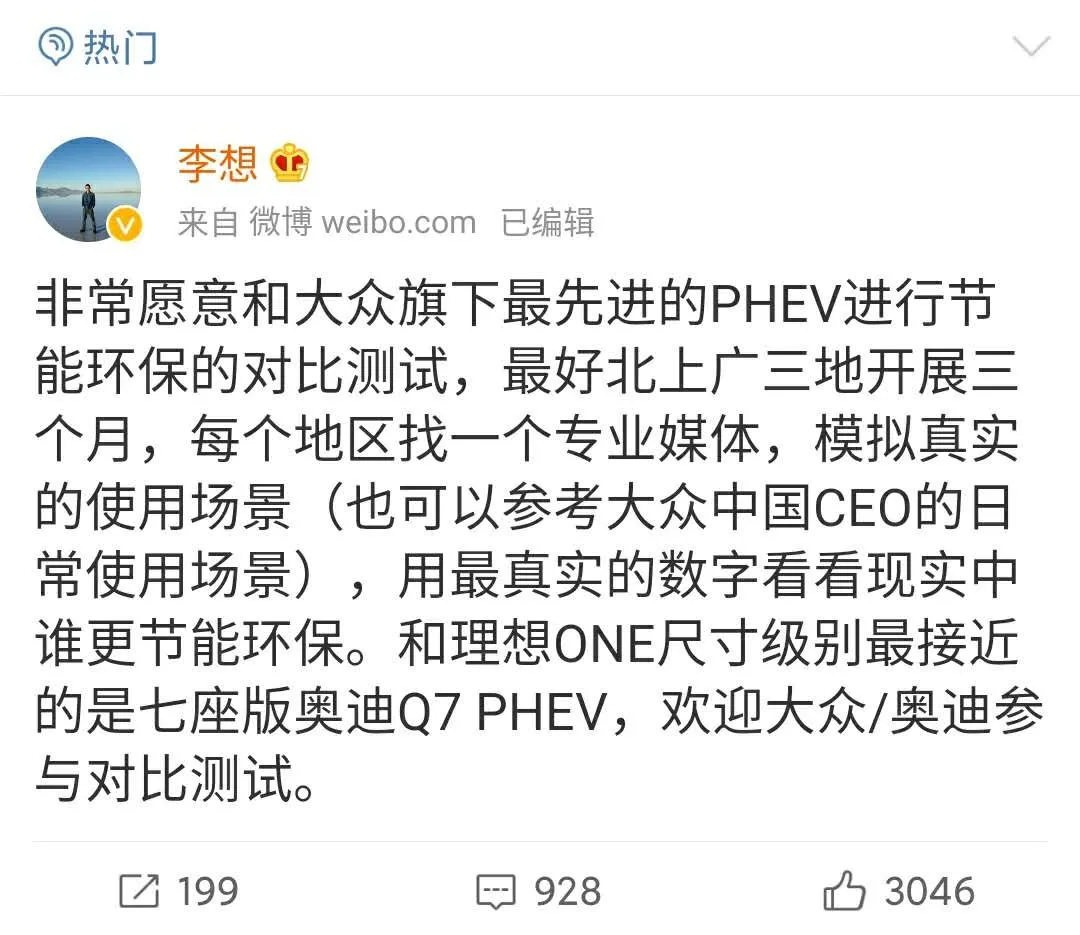
Li Xiang Sends Weibo again after 4 Months
Volkswagen China CEO Feng Sihan actually forced Li Xiang back to Weibo. This was Li Xiang’s first Weibo post in 4 months after the spontaneous combustion of a vehicle caused by a foreign object. Li Xiang couldn’t bear it anymore.
On September 8th, Feng Sihan pointed out at the PHEV media seminar that the extended-range electric vehicle (EREV) is the worst solution and is nonsense.
The viewpoint of the extended-range electric vehicle in the article is outdated and the worst solution. Among the domestic auto companies, only Ideal Cars takes the extended-range electric vehicle as the main technical route. This almost insulting voice prompted Li Xiang and Ideal Cars’ employees to fight back.

Ideal Cars Officially Challenges Volkswagen on Weibo
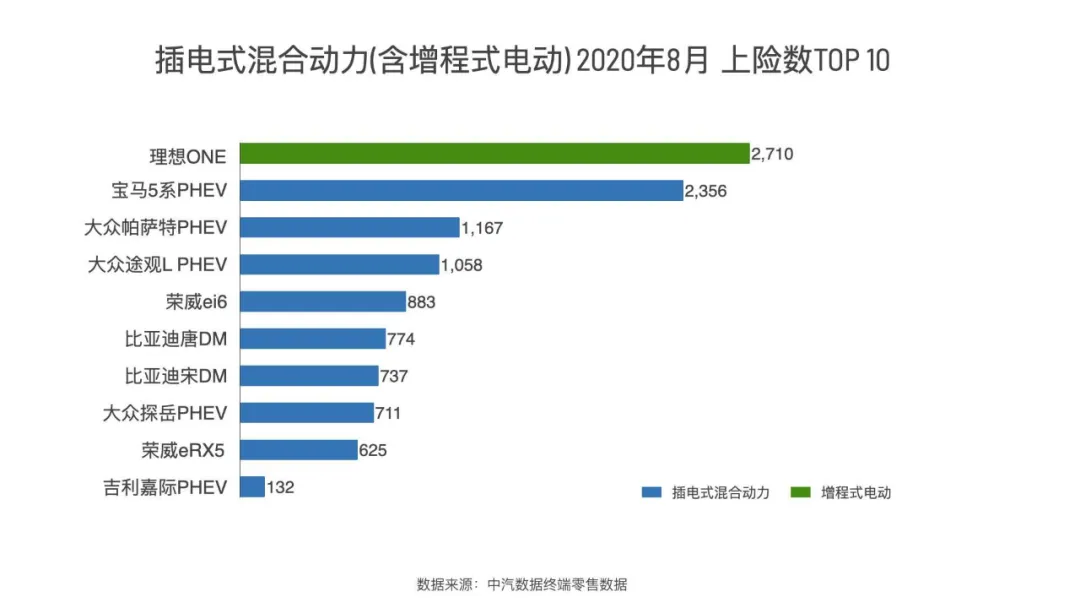
The Sales of Ideal ONE is Higher than that of Volkswagen’s PHEV
“Don’t provoke trouble, but don’t be afraid of trouble! Fight me if you dare!” This basically represents the attitude of the Ideal side. Li Xiang challenged Volkswagen’s SUV Audi Q7 PHEV in actual usage environment energy consumption testing with Ideal ONE, to see who is more energy-efficient and environmentally friendly.
If, according to the testing conditions described by Li Xiang’s Weibo, there is no doubt that Ideal ONE will win steadily. Because the real logic of who is more energy-efficient and environmentally friendly in actual environment is actually which car’s battery is bigger, whoever has a bigger battery is more eco-friendly.
According to the vehicle parameters, Ideal ONE’s battery is 40 degrees, with an NEDC pure electric range of 180 km; Q7 PHEV’s battery is 17.3 degrees, with an NEDC pure electric range of 56 km. That is to say, if you drive within 100 km per day in the city, Ideal ONE can run without refueling at all, but Q7 can’t. This comparison is unfair.
Therefore, the real and only method to measure the strength and weakness of Ideal extended-range electric vehicle and Volkswagen’s plug-in hybrid electric vehicle is to compare which car has lower fuel consumption under the same road conditions on the premise of energy conservation (the battery capacity does not increase or decrease, and only fuel is added for driving).### Two SUVs of the same size
So, I brought a 2019 Audi Q7 PHEV (hereinafter referred to as Q7), which is one year old and has a mileage of 30,000 kilometers, and had a one-week energy consumption test comparison with the Ideal ONE.
Special Note: The conclusions and data I have come to only represent my own car and its performance under the road conditions I have driven, and are for reference only.
Appetizers before the test
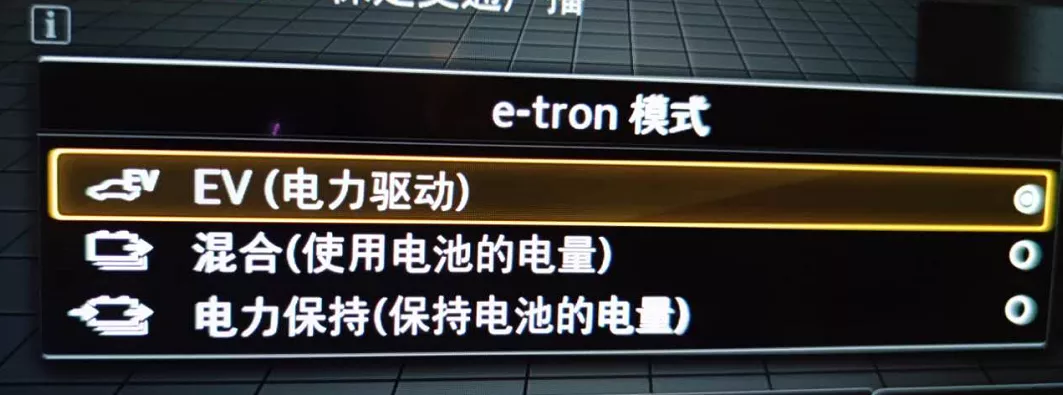
Three energy modes of the Q7 PHEV
Let me introduce the three energy modes of the Q7 first, which are EV mode (similar to the pure electric priority of Ideal ONE), hybrid mode (similar to the oil and electricity hybrid of Ideal ONE), and electric power maintenance mode (similar to the fuel priority of Ideal ONE).
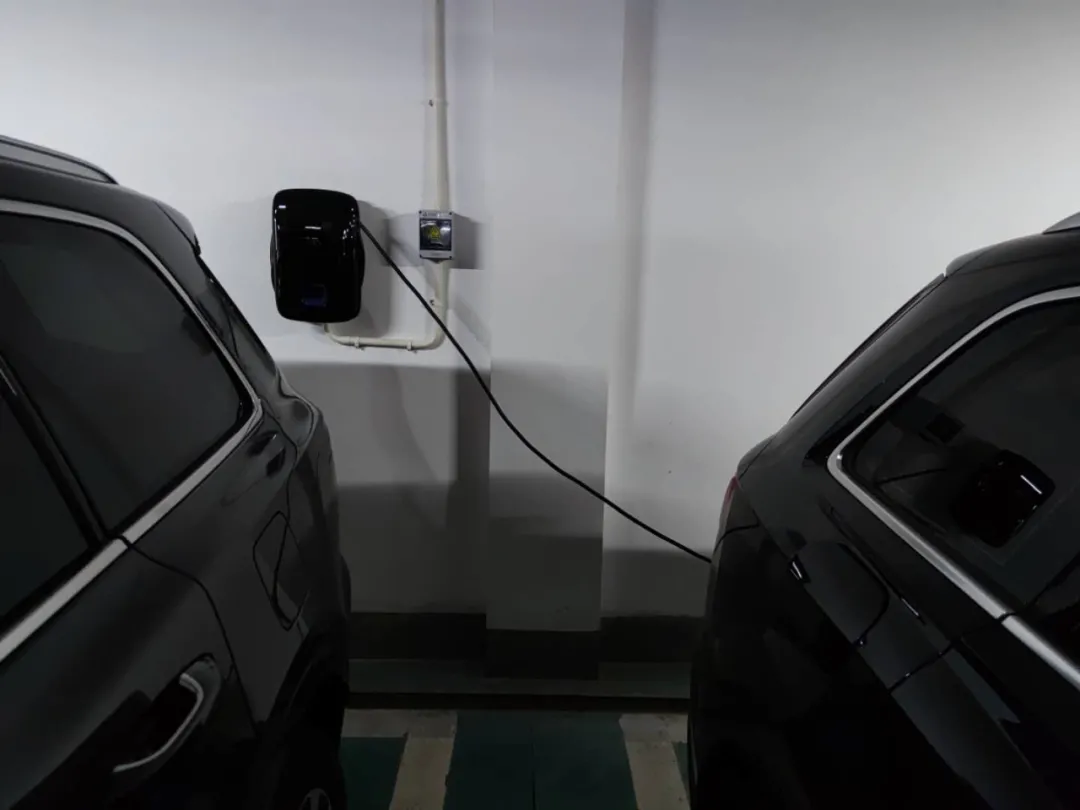
Ideal charging stations can charge Q7
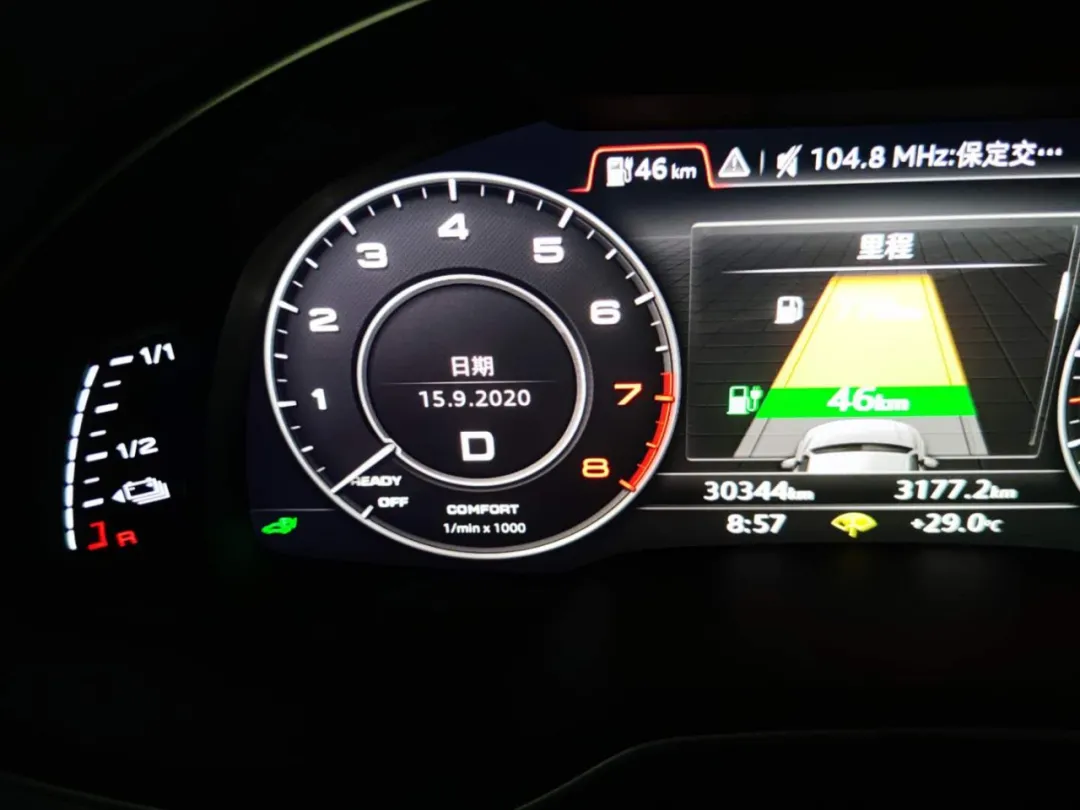
The Q7 has a range of 46 km when fully charged.
Let’s take a look at the pure electric range of the Q7. After being fully charged, it shows a range of 46 km, not the official NEDC data of 56 km. I think it may not be a battery degradation problem, but the rigorous style of German cars. The actual mileage is calculated based on the actual energy consumption. In the case of 22-degree air conditioning, the actual mileage is generally 70% of the NEDC range, and I predict it to be about 39 km.
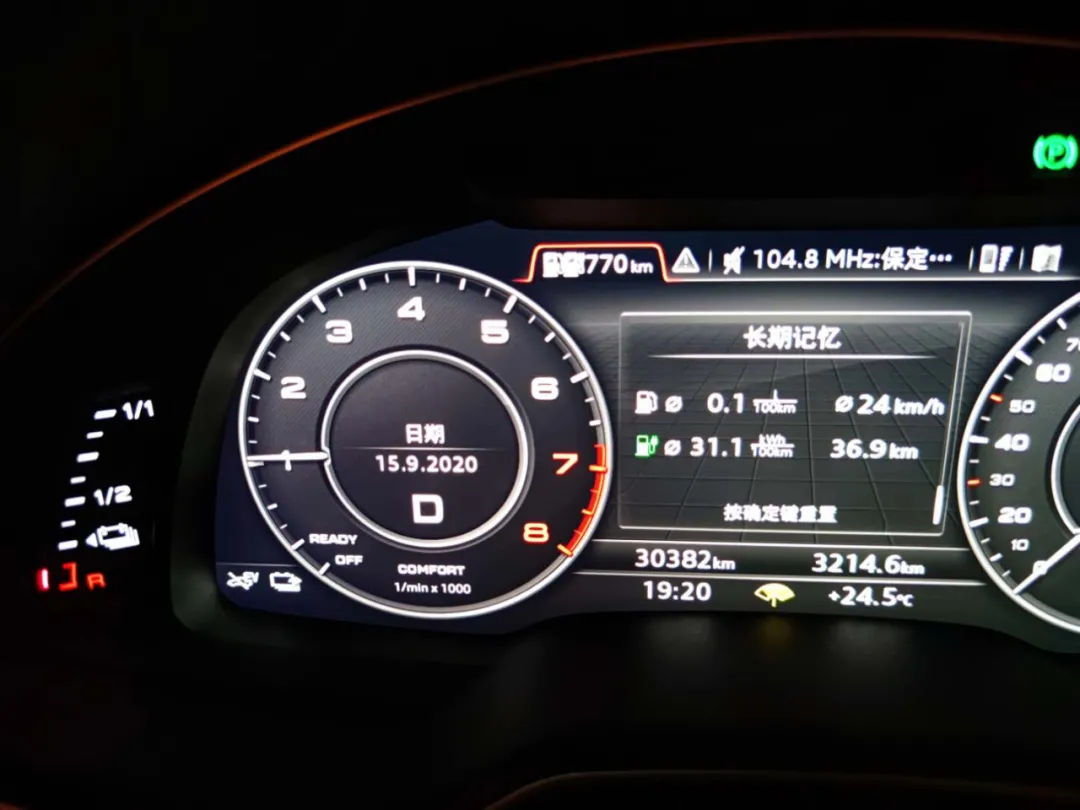
The engine starts after the left battery is depleted
Sure enough, when driving to 36.9 km (three-quarters of urban traffic lights and three-quarters of elevated roads), the pure electric range is 0, and it switches to hybrid mode and the engine starts. The actual pure electric range I drove for the Ideal ONE fluctuates between 90 km and 110 km.# Comparison of Power, Handling, Chassis, and NVH between Q7 and Li Xiang ONE
There is a significant difference in driving between Q7 and Li Xiang ONE, mainly due to the fatigue caused by Q7’s pure electric mode. In pure electric mode, Q7 can be driven up to 120 km/h, but since it only has a single electric motor with a power of 94 kW (128 horsepower), which is the level of a 1.4 T engine, it needs to be gradually accelerated. Furthermore, drivers cannot push down the accelerator too hard because Q7 has a kick-down threshold, and if exceeded, the engine will intervene, while Li Xiang ONE is always equipped with pure electric drive, so this problem does not exist.
Q7 has a 75-liter fuel tank, while Li Xiang ONE has only a 45-liter fuel tank. The official data shows that Q7 has a 0-100 km acceleration time of 5.09 seconds, while Li Xiang ONE has a speed of 6.05 seconds. However, in actual driving, Li Xiang ONE’s power is superior to Q7 because ONE is equipped with front and rear dual engines that respond faster and more directly, while Q7 may experience mild jerks due to engine and gearbox intervention.
In terms of handling, both cars have relatively equal performance. Li Xiang ONE’s control system is similar to the German style, and Q7 is also one of the best SUV in its class. If using the criterion of ordinary fuel vehicles, then Q7 is excellent, but since pure electric drive is a more advanced form of driving that surpasses fuel-based driving, it is impossible to match Q7 with Li Xiang ONE.
In terms of chassis quality, Q7 is superior to Li Xiang ONE in terms of toughness and high-end texture on both asphalt roads and bumpy roads. After driving Li Xiang ONE and then switching to Q7, drivers can clearly feel the improved quality of Q7’s chassis compared to Li Xiang ONE. On the other hand, passengers can’t feel a significantly greater difference in chassis quality when switching from Q7 to Li Xiang ONE. If we use a rating out of ten, Q7’s chassis can be rated at 10, while Li Xiang ONE scores 8.
Finally, in terms of NVH (Noise, Vibration, and Harshness) performance, there is no clear difference between these two cars.I want to criticize the pedestrian warning sound of Q7 electric, I don’t know which designer came up with the idea of using the engine’s roaring sound to simulate the pedestrian warning sound, and it can’t be manually turned off, even with the depth of the accelerator pedal increasing gradually! I once thought that even in pure electric mode, the engine was idling all the time, but it turned out to be a warning sound! Even if you use the conventional seagull warning sound of an electric car, it’s fine. Don’t Audi think about it?
In terms of NVH, Q7 is much better than the Ideal One when both engines are running. First of all, when the engine starts and stops, if the Ideal One achieves basic imperceptibility, then Q7 achieves complete imperceptibility which surprised me! This point is very worthy of praise, and I really want to give it some credit.
When driving at a speed of 20-60km/h in the city, the noise of Q7’s EA888 engine is also very, very low. Compared with the snoring sound of the Ideal One, I really envy other four-cylinder engines and powerful engines.
During the high-speed cruising stage with a speed exceeding 80km/h, the engine noises of the two cars are almost the same, and they are covered by wind noise. Here, I want to praise the Ideal One. After continuous OTA optimization, it completely solves the problem of excessive engine noise during high-speed testing this winter, which is a qualitative improvement. During the 110km/h cruising, switching back and forth between pure electric mode and fuel mode, the engine noise cannot be heard basically, which is very slight. Winter Testing Article – Introducing a Brand New “Fuel Car”, Ideal ONE
Comparison of In-car Feeling
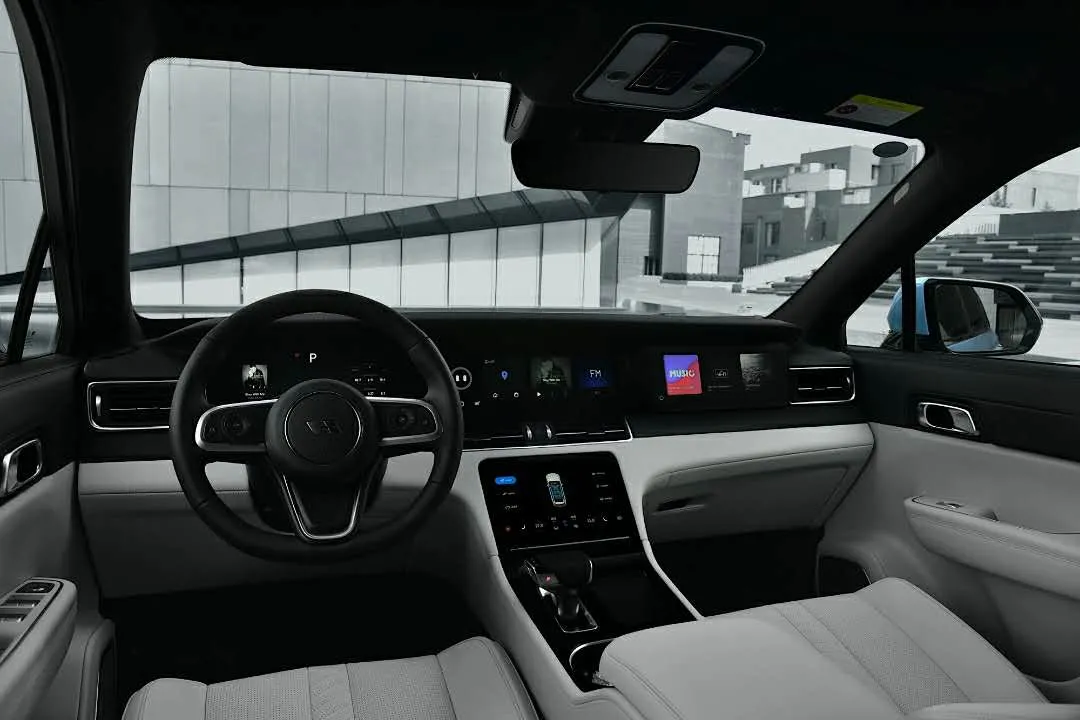
Four-Screen Interactive In-car System
All I can say is that the Ideal One’s in-car system completely crushed Audi’s in-car system, and they are not even products of the same era. Used to the Ideal One’s four-screen interaction, other in-car systems are simply unusable. The Ideal’s in-car system is definitely the easiest to use in the current market without any competition, and I think that in the future, the strength of the in-car system will be a very important reference factor for people when changing vehicles.
6. Brand Feeling Comparison# Audi Wins: Even Though I Have a BBA, I Don’t Mind If the Car I’m Driving Isn’t One
But when you’re driving an Audi, that brand-enhanced glow will always be there, no matter what car you’re driving even if it’s not a BBA. For example, when I go home to my neighborhood and the security guard sees me driving a Q7, his eyes look a little more warm and his smile seems brighter. After all, the Q7 gives the impression of being a million-dollar luxury car, even though you can get one for $60,000 to $70,000. At an ideal selling price of $328,000, who wouldn’t want one?
I remember a screenshot of Li Xiang’s point of view from before, asking why Tesla’s sales are so high, even though domestic pure-electric car enterprises surpass Tesla in many ways. I think the answer lies in the power of the brand. Tesla is like a totem, it still has followers trailing behind it despite all of its problems. After all, it is the creator, the brand that shows more face and more geek spirit than BBA. As for ideal, they need to continue to work hard in brand building.
Energy Consumption Testing under Energy Conservation
Location: Suzhou
Temperature: 26 degrees
Weather: Cloudy
Air Conditioning: 22 degrees automatic
Testing period: 5 days
Driving style: Neutral, not aggressive or relaxed
Average speed test in city road conditions: 27 km/h (three-quarters in city red, green and yellow light road conditions, one-quarter elevated)
Average speed test for highway road conditions: 90 km/h (with main speed at 110 km to 120 km)
Overlapping rate of the two testing routes: 95%
Fueling method: Same gas station, same gas pump
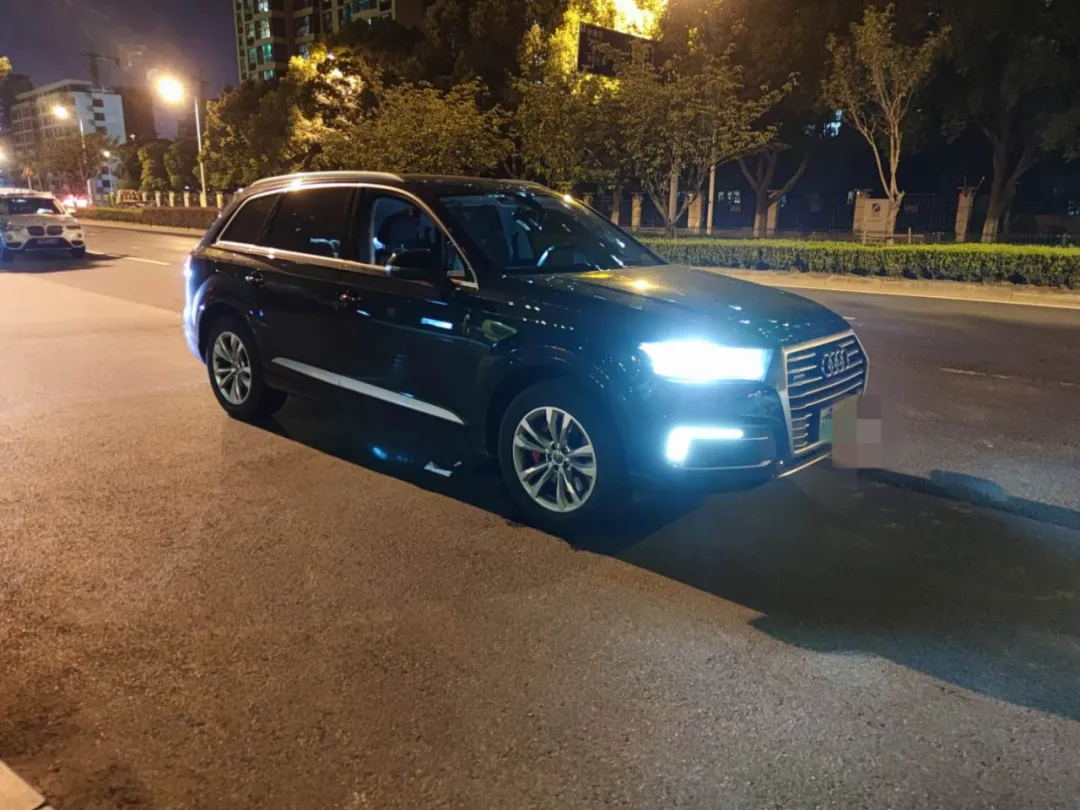
Receiving the Q7 Late at Night, the Headlights are Beautiful
In comparing the urban energy consumption of the ideal ONE’s fuel priority mode and the Q7’s battery life maintenance mode, while keeping the electric charge consistent at the beginning and end of the test, it was found that the Q7’s battery life maintenance mode could not guarantee the battery’s charge in city road conditions.
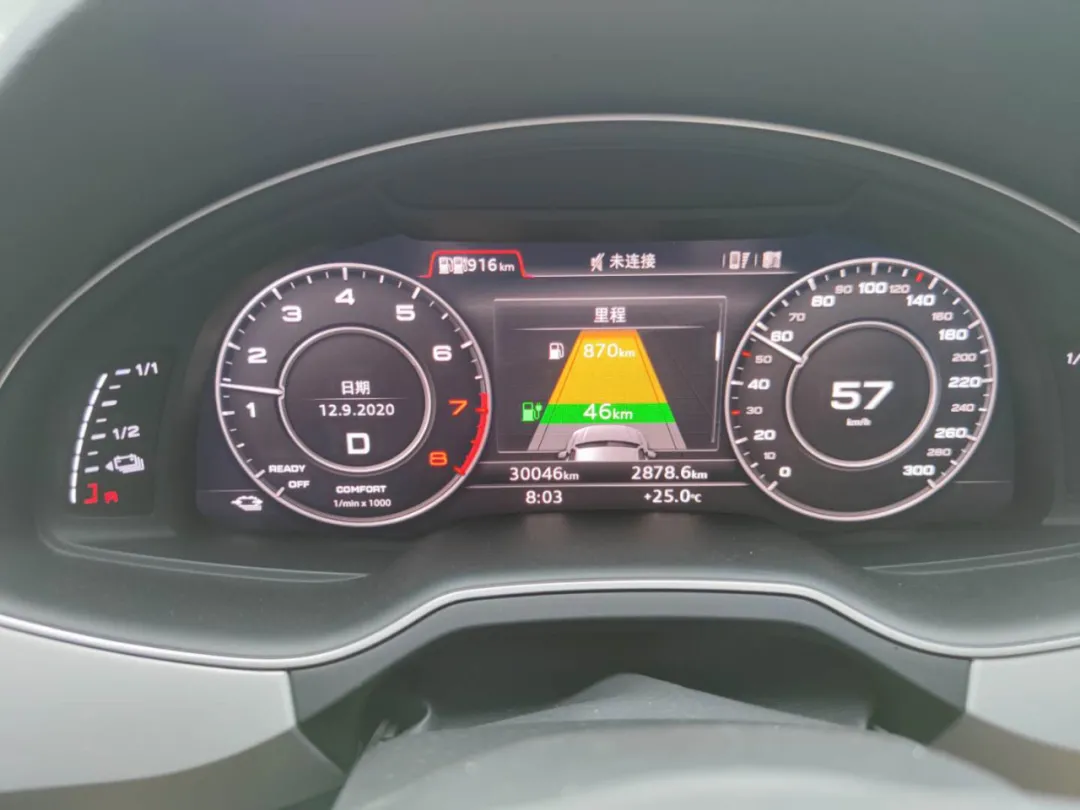
Departing at Full Charge
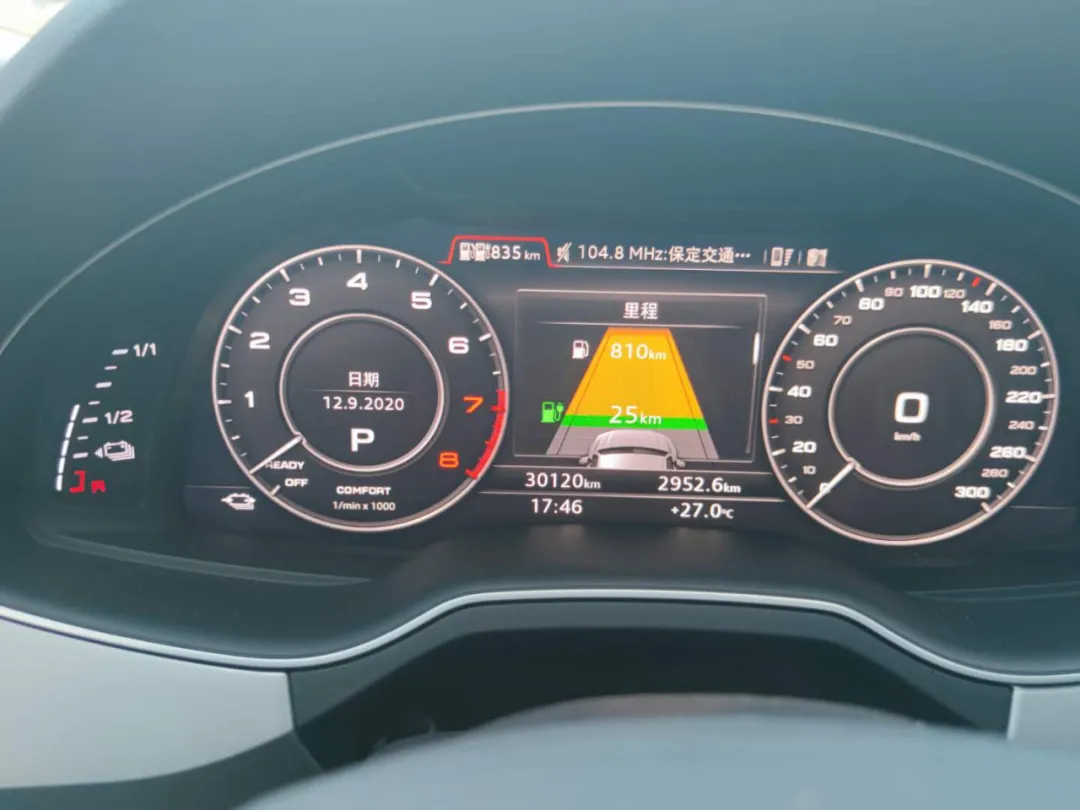
Surprisingly, the Battery Life Maintenance Mode Lost Charge…
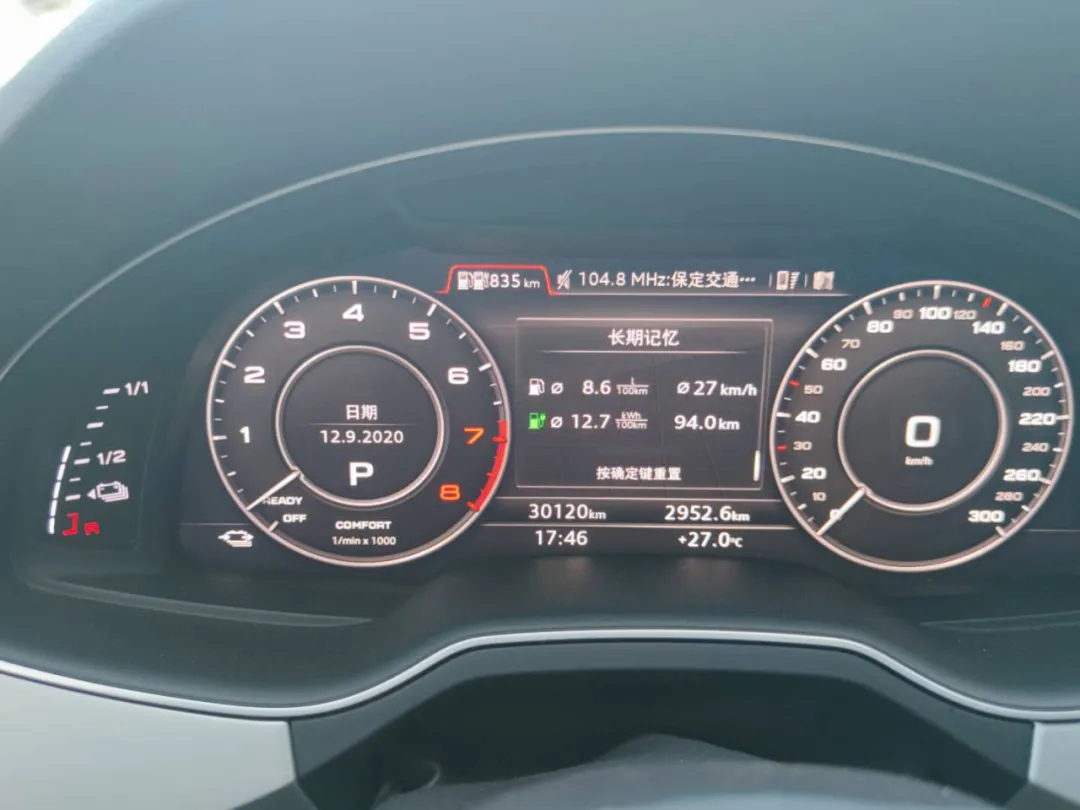
How Am I Supposed to Calculate Pure Fuel Consumption?# Results of Q7 Road Test
During the city road test of Q7, it traveled 94 km with a fuel consumption of 8.6 liters per 100 km and a power consumption of 12.7 kWh per 100 km. The pure electric endurance was 46 km when it was fully charged in the morning, but it decreased to 25 km after driving in the city, which is not consistent with the principle of energy conservation. It indicates that the Q7 PHEV usually relies on fuel instead of electricity.
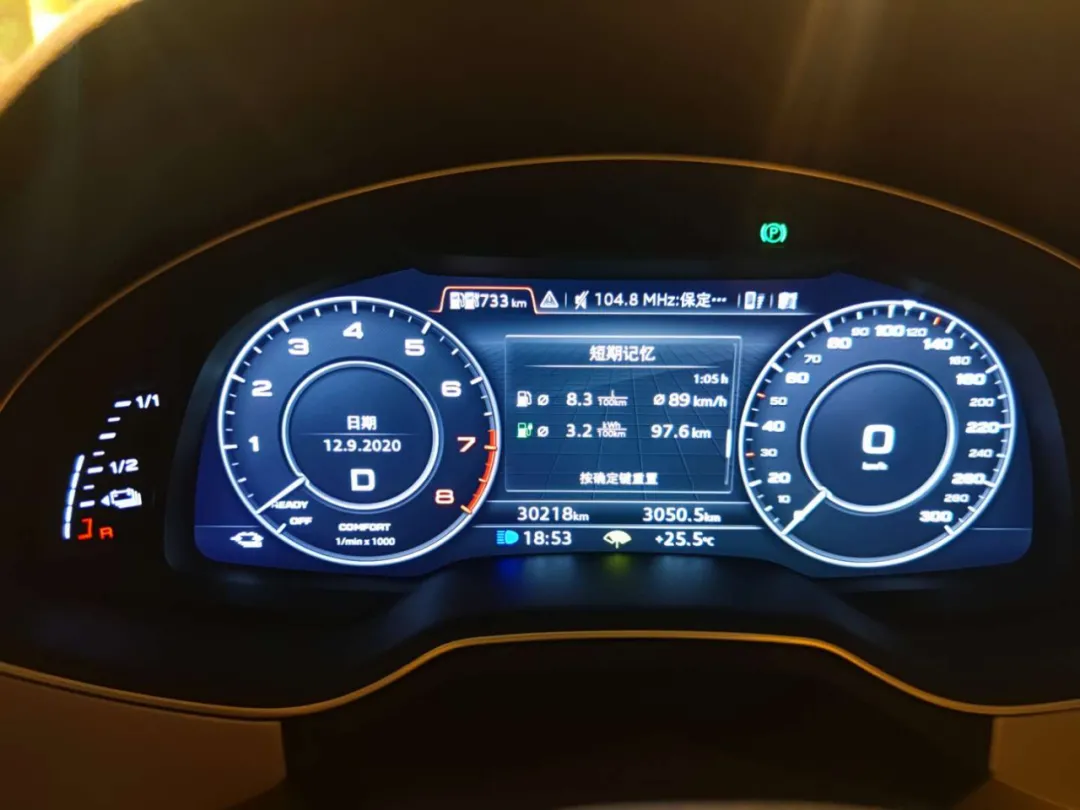
Results of Highway Test
During the highway test of Q7, it traveled 97 km with a fuel consumption of 8.3 liters per 100 km and a power consumption of 3.2 kWh per 100 km (which can be ignored as it belongs to energy recovery). During the high-speed driving, the PHEV directly used the engine, so it did not consume electricity.
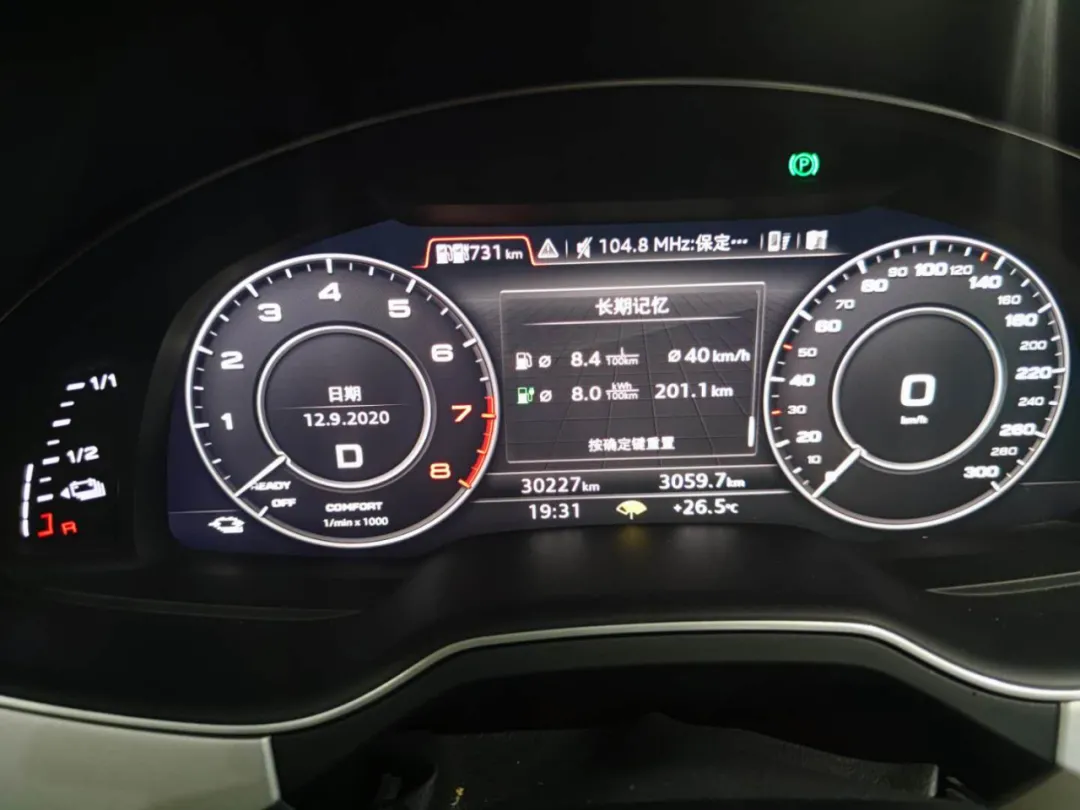
Total Mileage of Test

Fuel Usage
Finally, during this test, the Q7 traveled a total of 201 km with a fuel consumption of 8.4 liters per 100 km and a power consumption of 8 kWh per 100 km. The actual fuel consumption was 16.85 liters, which is almost the same as the displayed fuel consumption, demonstrating the rigorousness of German engineering.
As for the pure fuel consumption in the city, the Q7 battery participated in driving. To calculate the pure fuel consumption, I used an inaccurate method of subtracting 15 km (assuming battery endurance driving) from the 94 km city driving and then calculated the fuel consumption. The result was 10.1 liters per 100 km, which should be the pure fuel consumption of the Q7 in the city.
Of course, there may be someone who thinks that my method is too inaccurate. Therefore, I had to drive the Q7 again with pure electric endurance of 0 and spend more than three hours to measure the fuel consumption using electric power.
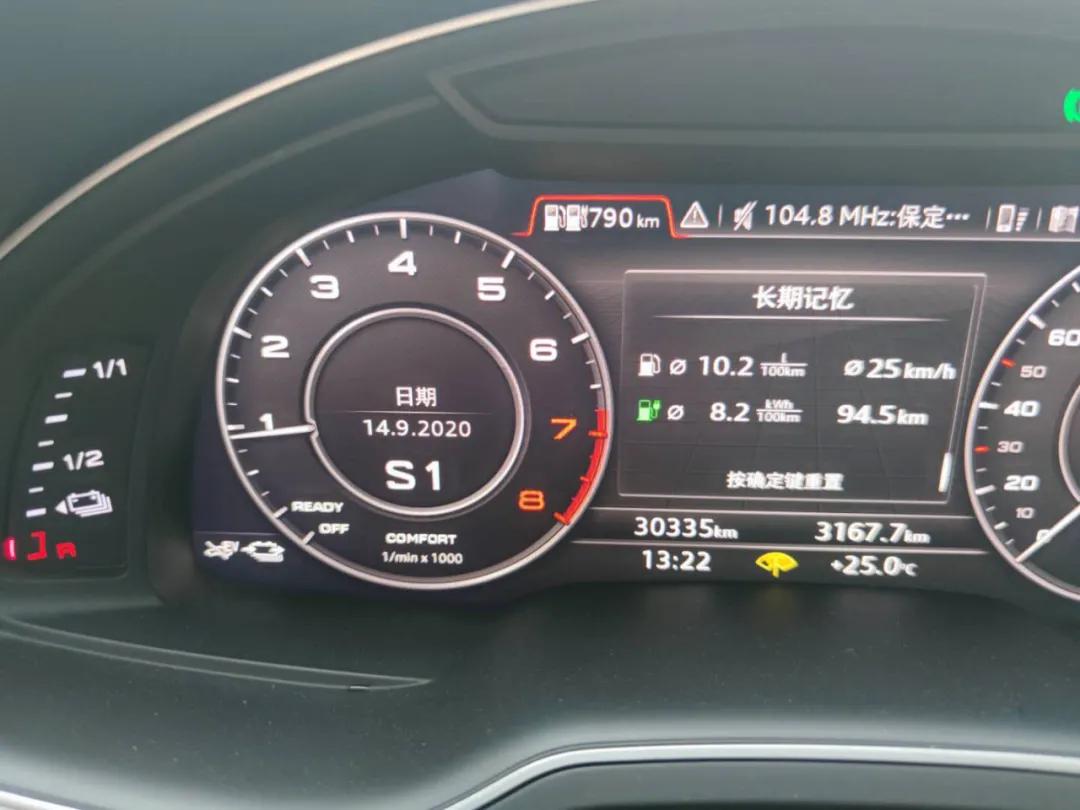
Another Accurate Test
During this test, it still traveled 94 km with an actual average speed of 28 km/h (displayed as 25 km/h because I spent 30 minutes on the phone without starting the engine. Ignoring the 30 minutes, the actual average speed was 29 km/h), and the fuel consumption was 10.2 liters per 100 km. The results of this rigorous test were consistent with the previous inaccurate one.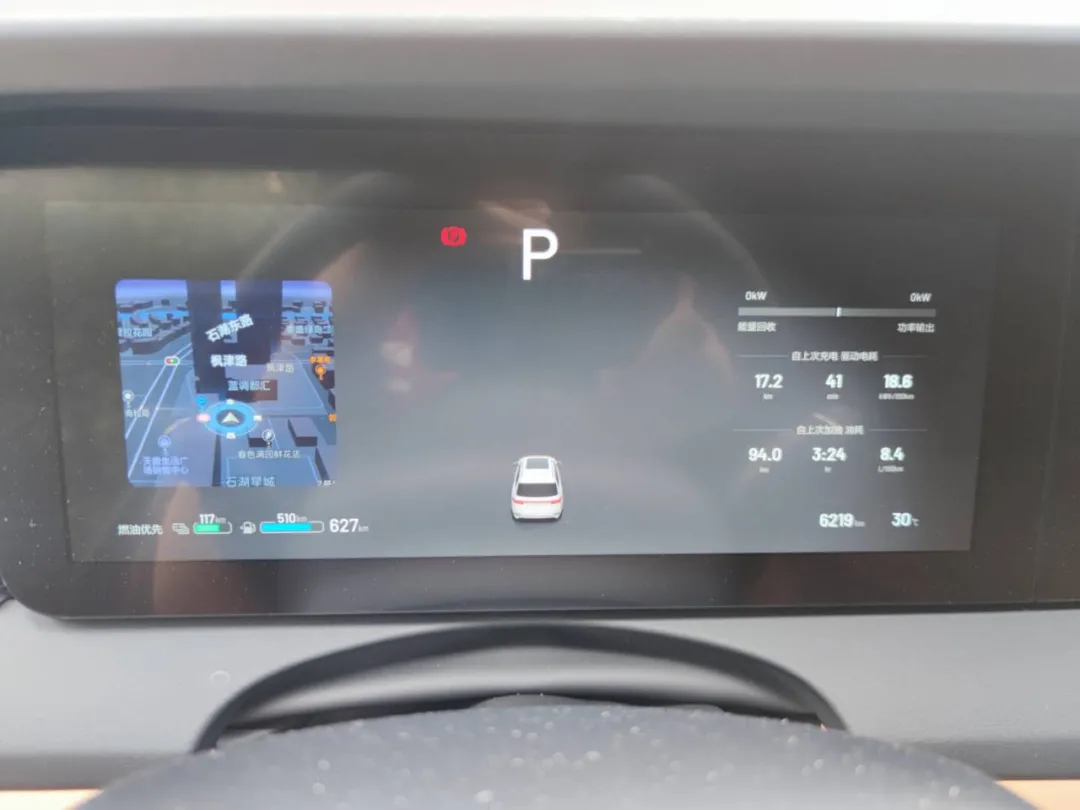
Fuel Consumption Data of Ideal ONE in Different City Scenarios
Under the same city driving condition, the Ideal ONE selects fuel priority mode. During the test, the engine starts when there is still 119 km (69\% battery remaining) of pure electric range left, and the car drives for 94 km, showing a fuel consumption of 8.4 liters per 100 km. The pure electric range remaining is still 117 km, which basically remains unchanged. At first glance, do you think that the Ideal ONE with a fuel consumption of 8.4 liters per 100 km in urban area has a huge advantage over the Q7 with 10.2 liters per 100 km? No, the displayed fuel consumption of the Ideal ONE is not accurate. We will get the exact figures later by refueling.
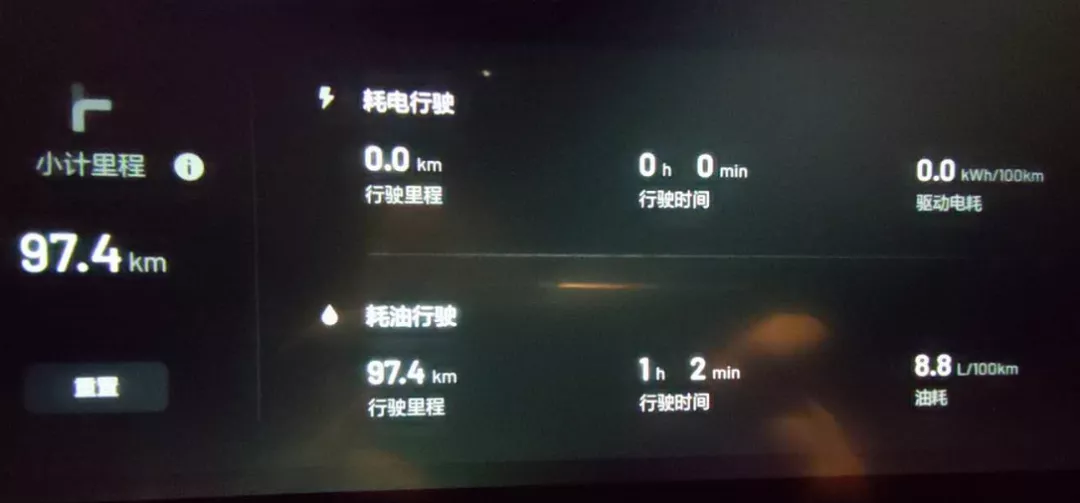
Fuel Consumption Data of Ideal ONE in Different Highway Scenarios
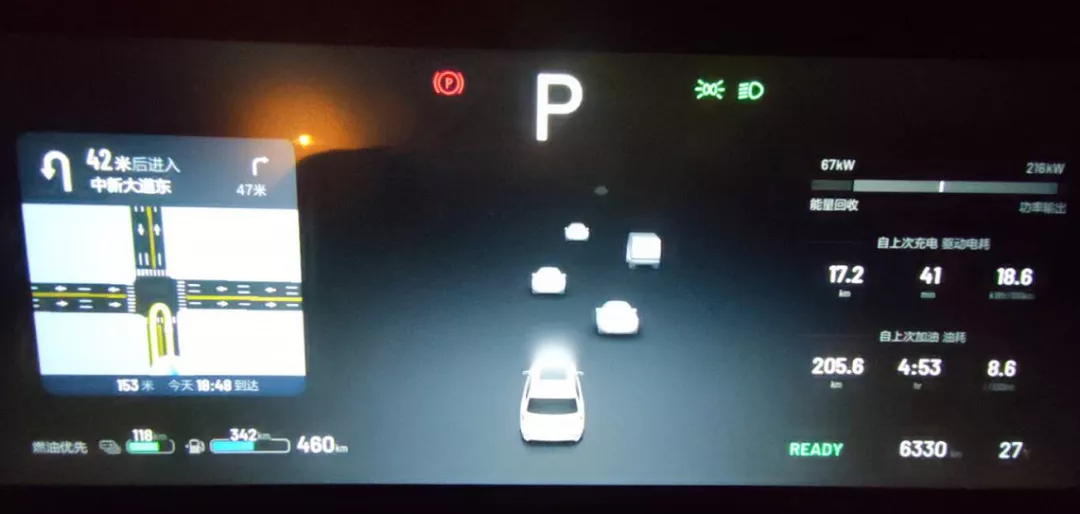
Total Test Mileage Fuel Consumption Data of Ideal ONE
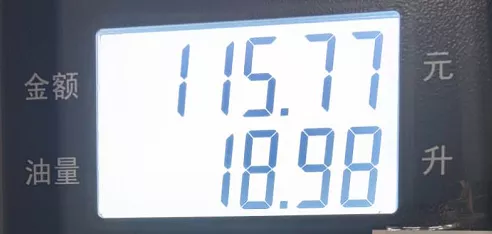
Total Fuel Consumption
During the test of Ideal ONE in highway scenarios, the car drives a total of 97 km, and the displayed fuel consumption is 8.8 liters per 100 km. In the end, the fuel consumption of Ideal ONE is 8.6 liters per 100 km after driving 205 km, with a remaining pure electric range of 118 km, achieving energy conservation. The total refueling amount is 18.98 liters, and the actual fuel consumption per 100 km is 9.2 liters, which is 0.6 liters more than the displayed fuel consumption.
Here come the test results: the actual fuel consumption of Ideal ONE in urban areas is 9 liters per 100 km, and in highway scenarios, it is 9.4 liters per 100 km. The fuel consumption of Audi Q7 PHEV in urban areas is 10.2 liters per 100 km, and in highway scenarios, it is 8.3 liters per 100 km. This means that under the premise of energy conservation, without affecting the pure electric range, Ideal ONE saves more fuel in urban areas while Audi Q7 saves more fuel in highway scenarios.
Who wins in this competition of words?
Throughout the entire test, it is known without comparison that Ideal ONE wins in terms of energy efficiency and environmental protection. This is because the battery is larger, and the actual test shows that the pure fuel consumption in urban areas is lower than that of the Q7. This further proves that the extended-range technology is not an outdated technology.
However, throughout the entire test process, Volkswagen’s PHEV technology has also left me with many vivid impressions, and there are many advantages worth learning from by Ideal.First of all, due to the Q7’s inability to maintain power, driving with electricity is the norm, but the driving quality is still excellent. For the strongest example, because of the need to preserve power, the engine of the ID.4 has a 30% chance of not turning off while waiting at a red light, constantly making noise. However, even when the pure electric range is 0, the Q7 can idle and turn off the engine simultaneously in 95% of cases. Therefore, the Volkswagen PHEV with power supply can be understood as having the same hybrid technology effect as Toyota or Honda, and the Q7 PHEV can even be more fuel-efficient than a regular Q7 without charging.
Secondly, Volkswagen Audi has definitely demonstrated its strong expertise in engine vibration suppression and noise reduction, which is much better than that of the ID.4 in fuel priority mode. After all, the EA888 engine is Volkswagen’s key product—something that the ID.4’s Dongfeng 1.2L Turbo engine cannot compare to.
Thirdly, the actual fuel consumption of the Q7 is almost identical to the displayed fuel consumption, while the ID.4’s fuel gauge shows lower fuel consumption than the actual fuel consumption. It could be the result of the technical difficulties of calibrating the fuel gauge with pure electric and fuel-cell drivetrains. We suggest that ID.4 adjust the displayed fuel consumption to have smaller errors.
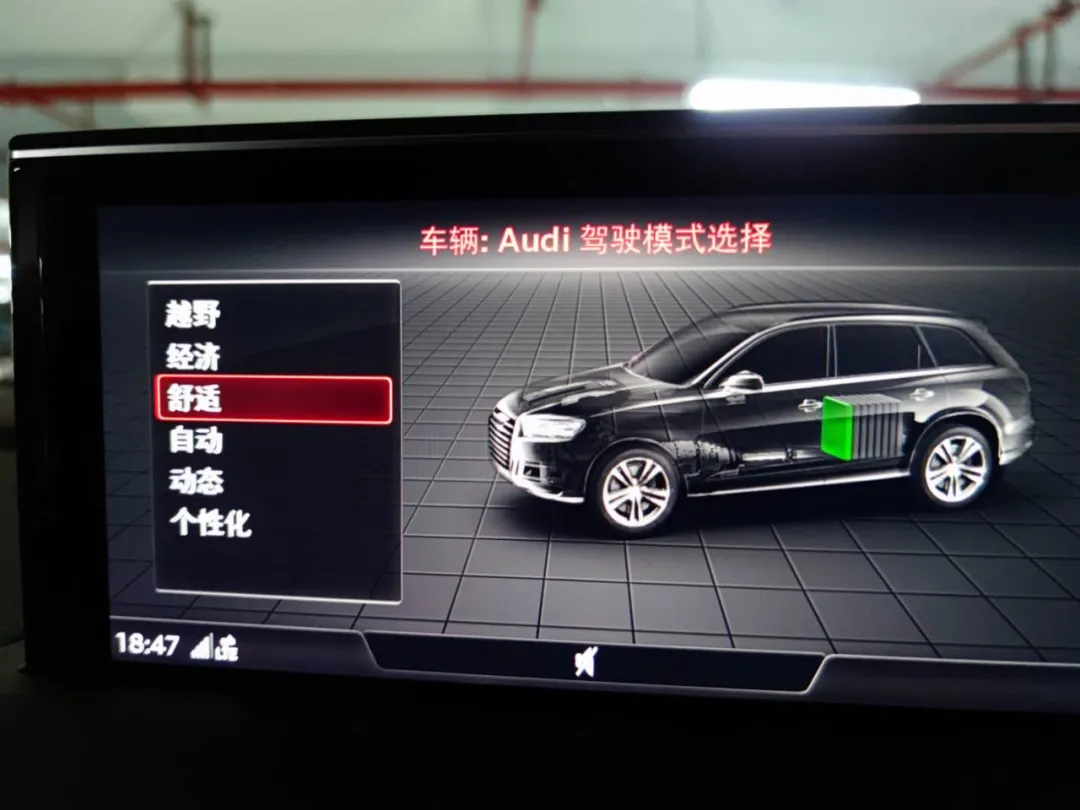
One-click switching between multiple modes
Fourthly, Volkswagen’s cars have a driving mode selection similar to that of sport, comfort, and standard modes, which can complete the unified configuration of power, steering, suspension and other combinations with one click. We hope that ID.4 can implement this function sooner, so that drivers do not have to select multiple options every time. One-click switching also better ensures driving safety.
Returning to the beginning of the article, the possible greatest significance of this verbal battle is to let more people understand what kind of existence a vehicle that can run on both fuel and electricity is. Everyone must have their own opinions on this test. From my perspective, range-extender electrification or PHEV plug-in hybrid technology is the best solution for the current Chinese automotive industry under its current circumstances (5 to 10 years). There is no need to argue over which one is better.
ID.4 cannot be complacent, and Volkswagen should also put away its arrogance and prejudice. The two brands should complement each other’s strengths and improve each other’s weaknesses and join hands to expand the market for plug-in hybrid vehicles. This will provide users with more practical and energy-efficient cars, which is the right path.
This article is a translation by ChatGPT of a Chinese report from 42HOW. If you have any questions about it, please email bd@42how.com.
